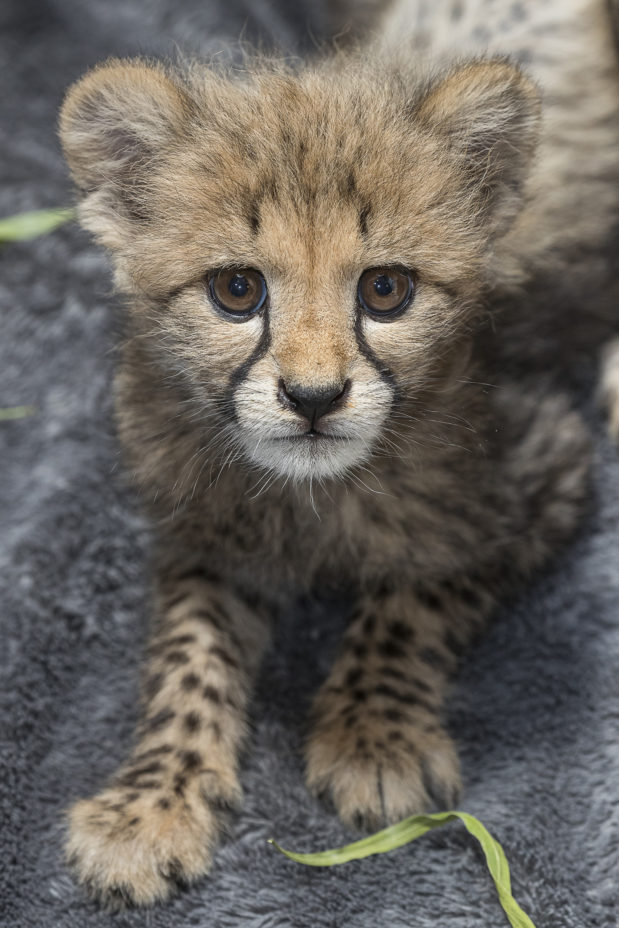Cheetah Cub Thriving at San Diego Zoo Safari Park
In between eating her morning meal, a seven-week-old cheetah cub played and pounced in an indoor nursery area at the Ione and Paul Harter Animal Care Center, at the San Diego Zoo Safari Park. The curious little feline hasn’t yet been named, and weighs just over five pounds. Since the cub arrived at the nursery at two-days old, wildlife care specialists have been bottle-feeding her a formula specifically designed for cheetahs, weighing her daily to monitor her health and simulating the grooming she would normally receive from her mother. As she has grown, the bottle feedings have become less frequent and the cub is now primarily eating formula mixed with meat. She recently moved from the nursery to a larger area so she has more room to run and play as she grows larger.
“While we always prefer for the mother to raise its cub, it is a privilege for us to care for the cub when its mother can’t provide what it needs to survive,” said Eileen Neff, senior wildlife care specialist, San Diego Zoo Safari Park. “This little one has adapted very quickly to her surroundings. She is eating well, super confident and sure of herself, and very playful.”
The female cub was born April 29 to first-time mother Mary Jane, at the Safari Park’s Cheetah Breeding Center. Cheetahs that give birth to only one cub, called a singleton, generally cannot produce enough milk to keep the cub alive and will often abandon the cub. To ensure survival of this cub, experts from the Association of Zoos and Aquariums (AZA) Species Survival Plan (SSP) made the recommendation for this cub to be hand raised.
The youngster will remain at the Safari Park for about three months and then will move to the San Diego Zoo, joining other cheetahs and becoming an ambassador for her species.
The San Diego Zoo Safari Park is one of nine breeding facilities participating in the cheetah Breeding Center Coalition (BCC). The goal of the coalition is to create a sustainable cheetah population to prevent extinction of the world’s fastest land animal. It is estimated that the worldwide population of cheetahs has been reduced from 100,000 in 1900 to just over 7,000 today, with about 10 percent now living in zoos or wildlife parks.
The cheetah breeding program is just one of the ways that San Diego Zoo Global works to save species around the world. To support San Diego Zoo Global’s conservation efforts, visit SanDiegoZoo.org/Donate or SDZSafariPark.org/Donate. Those wishing to help via traditional mail can send a donation of any amount to San Diego Zoo Global, P.O. Box 120551, San Diego, CA 92112.

Category: Animals, Entertainment, Local News, Nonprofit







